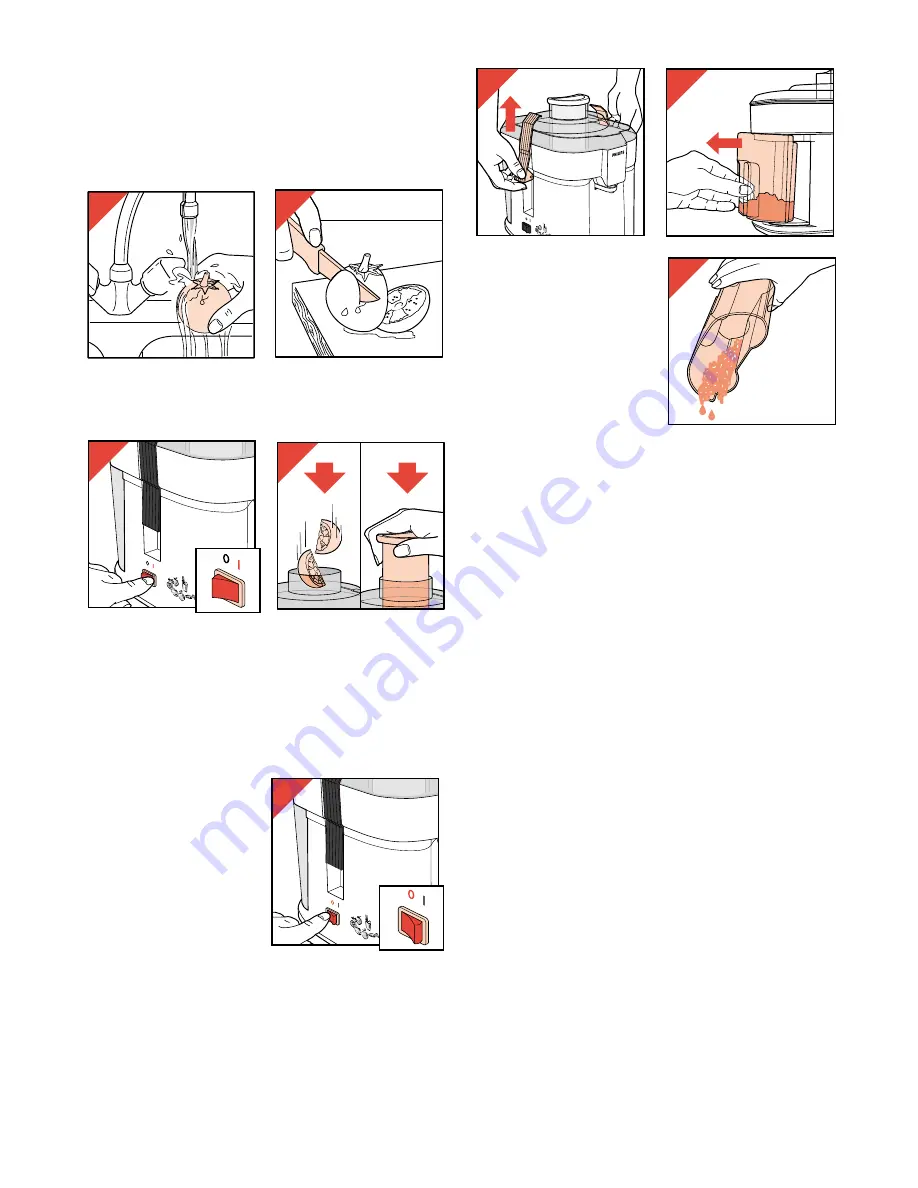
5
How to use
- Check if the lid is correctly placed.
• For your safety: the appliance can only
operate when the lid has been correctly
mounted on to the base unit.
- Wash the fruits and/or vegetable(s) (fig. 6) and
cut them in pieces (fig. 7) to fit into the feeding
tube.
- Switch the appliance on by pressing the on/off
switch (fig. 8).
- Put the pieces into the feeding tube and press
them gently downwards with the pusher (fig. 9).
• Do not press down with force. This would
give worse results and could even block the
rotating sieve.
• Never put any objects or your fingers in the
feeding tube.
- After the juice has
stopped flowing:
switch the appliance
off (fig. 10) and wait
for the sieve to come
to a complete
standstill before
removing the juice jug
or cup.
- Preferably, drink the juice immediately after it
has been extracted.
Exposure to the open air for any length of time
will result in the juice losing its nutritional value
and its taste.
However, if you wish to keep the juice, put it
into the refrigerator in a well-closed container
for a maximum of 24 hours.
- When the pulp
container is full:
switch off (fig. 10) and
wait for the sieve to
come to a complete
standstill,
release the two latches
to disassemble the lid
(fig. 11),
remove the pulp
container (fig. 12),
empty the pulp container (fig. 13).
Reassemble the juice extractor and continue
the process.
Culinary hints
• With tomato juice you can prepare a delicious
Bloody Mary.
• Pulp of e.g. carrots, beetroots, cabbage,
spinach can be used as a basis for soup,
sauce, jam, ice-cream and dessert.
Cook the pulp with some spices. Liquidize the
cooked pulp using a food processor or a (bar)
blender.
Use tomato pulp to make a tomato paste.
• Try these combinations of juices: apple with
carrot, orange with grape, pineapple with
grapefruit, beetroot with carrot, carrot with
melon, apple with orange.
Cleaning
• Switch off and remove the mains plug from the
wall socket before cleaning.
• Disassemble the appliance for washing-up as
indicated in figs. 11-13.
• The base unit may be wiped with a damp cloth,
some detergent may be required.
• Do not use scourers, scouring pads, abrasives,
steel wool, acetone, alcohol etc.
• Wash the parts which have been in contact with
food in warm soapy water immediately after
use.
• Do not clean parts in a dishwasher.
• Use a soft brush for cleaning the sieve.
6
7
8
9
10
11
12
13
Summary of Contents for HR2825
Page 1: ...HR 2825 26 ...
Page 3: ...3 1 A C D E G B 500 450 400 350 300 250 200 150 50 F 100 H I ...
Page 26: ...4222 000 89684 u ...






































